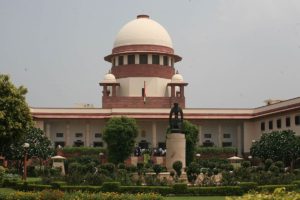In a recent judgment delivered by the Delhi High Court viz. Nitin Bhatia vs. Nidhi Kalani , the following observations and principles have been laid down while computing maintenance amount under section 125 Cr. P. C or Section 24 of HAMA as the case may be:
The object behind Section 24 of the Hindu Marriage Act, 1955 is to provide for maintenance, pendente lite, to a spouse in matrimonial proceedings so that during the pendency of the proceedings the spouse can maintain herself/himself and also have sufficient funds to carry on the litigation so that the spouse does not unduly suffer in the conduct of the case for want of funds.
A spouse unable to maintain himself/herself is entitled to maintenance on the principle of equi-status and respect that the spouse would have enjoyed if he/she continued to live with other spouse.
The provisions of Section 24 are beneficent in nature and the power is exercised by the Court not only out of compassion but also by way of judicial duty so that the indigent spouse may not suffer at the instance of the affluent spouse. The legislature, in its discretion, has not fixed any guideline regarding ceiling limit of maintenance, pendente lite, as in the case of Divorce Act or Parsi Marriage Act. The word ‘support’ in Section 24 is not to be narrowly interpreted. It does not mean bare existence. It means that the claimant spouse should have the same comfort as the other. Of course, the section is not intended to bring about arithmetical equality between the two.
The Court while considering the merits of an application for grant of an interim maintenance under Section 24 has to necessarily arrive at prima facie determination about the earning capacity of the rival claimants. The determination cannot be made with exactitude; it is essentially interim in nature. The Court is called upon to make a summary consideration of amount which the applicant is to be awarded by way of maintenance pendente lite and litigation expenses in accordance with the financial resources of the parties. Capacity of the other party to earn cannot be taken into consideration — it is only the actual earning of the opposite party on the basis of which relief can be granted. Permanent income and not casual income is relevant. For example, if a husband brings on record that the non-applicant wife earns some amount by taking coaching classes for children, this cannot be termed as her permanent income or that the wife has independent permanent source of income. The proceedings being summary, the matter has to be decided on the basis of pleadings supported by affidavits and the documents that may be filed by the parties in support of their case.
Where there was sufficient means in the family of the husband on the strength of which the husband got married he has to share the burden to support his wife during the course of annulment of such marriage.
Where the parties do not come forward with exact income they have, the Court would have no alternative but to apply its guess-work. In the decision reported as 140 (2007) DLT 16, Sh. Bharat Hegde v. Smt. Saroj Hegde, it was held that under noted eleven factors have to be taken into account:
1. Status of the parties.
2. Reasonable wants of the claimant.
3. The independent income and property of the claimant.
4. The number of persons, the non-applicant has to maintain.
5. The amount should aid the applicant to live in a similar life style as he/she enjoyed in the matrimonial home.
6. Non-applicant’s liabilities, if any.
7. Provisions for food, clothing, shelter, education, medical attendance and treatment, etc. of the applicant.
8. Payment capacity of the non-applicant.
9. Some guess work is not ruled out while estimating the income of the non applicant when all the sources or correct sources are not disclosed.
10. The non-applicant to defray the cost of litigation.
11. The amount awarded under Section 125, Cr.P.C. is adjustable against the amount awarded under Section 24 of the Act.”
